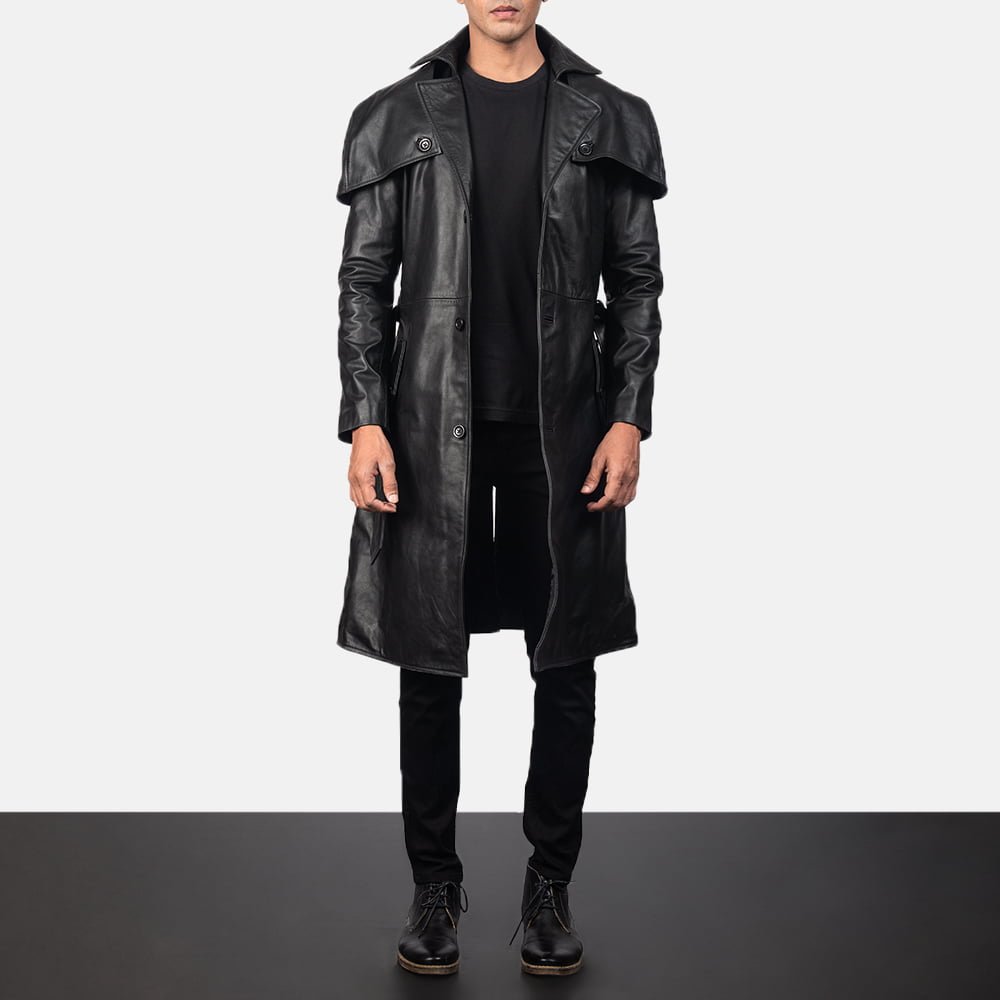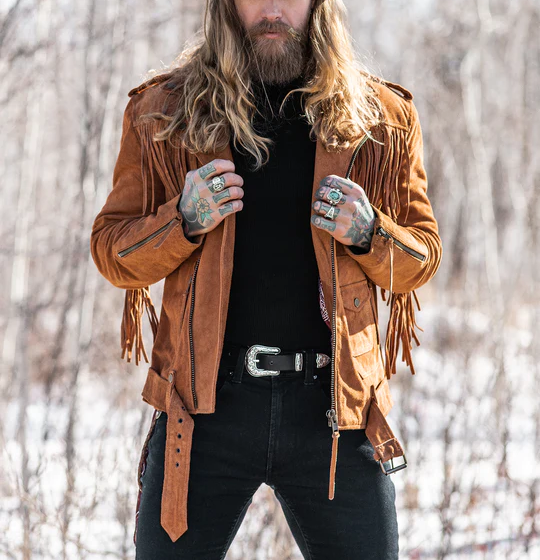What is the difference between a duster and a trench coat?
What is a Duster?
The duster coat, a term that evokes the image of elegance and practicality, has a rich history rooted in the late 19th century. Originally, dusters were designed for horse riders to shield themselves from dust and dirt while traversing unpaved roads. The lightweight fabric and long length of these garments allowed riders to maintain comfort and ease of movement. The loose fit provided ample airflow, making it suitable for warmer climates or long travels.
As urban lifestyles evolved, the duster began to transition from practical wear to a fashionable staple. Its design, characterized by its flowing silhouette and versatile styling options, made the duster popular among both men and women. The coat’s evolution into modern fashion is marked by its association with several significant cultural movements, offering a unique blend of style and functionality.
Dusters are typically crafted from various materials, including cotton, linen, and wool, which enhance their usability across different seasons. In warmer months, lightweight cotton dusters allow for breathability, while wool versions offer added warmth during colder months. The designs may vary significantly, ranging from minimalist cuts to those adorned with intricate details like belts or buttons, catering to diverse fashion tastes.

Today, dusters are worn in various settings, seamlessly fitting into casual outings, formal events, or as part of an artistic ensemble. They can be layered over a simple outfit to add a touch of sophistication or worn with bold accessories to make a striking fashion statement. Whether in their traditional form or as contemporary adaptations, dusters continue to capture the imagination of fashion enthusiasts.
What is a Trench Coat?
A trench coat is a classic outerwear garment that has its historical roots deeply embedded in the military, particularly during World War I. Originally designed for British army officers, the trench coat provided protection from the elements while maintaining a polished appearance suitable for professional settings. The coat’s signature features include a double-breasted front, belted waist, and epaulets on the shoulders, which further enhance its fitted silhouette. Traditionally crafted from durable materials such as gabardine, which is both weather-resistant and breathable, the trench coat serves as an effective barrier against wind and rain.
One of the coat’s defining characteristics is its waterproof quality, making it an ideal choice for inclement weather. The fabric’s advanced weave not only repels water but also allows for ease of movement, contributing to the trench coat’s functionality and style. Over the years, variations of the original design have emerged, adapting to contemporary fashion trends while still retaining the essence of their military heritage. Modern trench coats are available in a myriad of materials and colors, offering versatility for various occasions.

The trench coat has solidified its place in modern fashion, transcending its utilitarian origins to become a staple in both men’s and women’s wardrobes. It can be paired effortlessly with formal attire as well as casual outfits, making it a timeless piece suitable for various social contexts. As fashion evolves, the trench coat continues to be reimagined by designers, ensuring its relevance in today’s style landscape while paying homage to its storied past. With its embodiment of elegance and practicality, the trench coat remains a quintessential garment that symbolizes sophistication and resilience.
Key Differences Between a Duster and a Trench Coat
When distinguishing between a duster and a trench coat, several key differences become apparent, primarily concerning their design, intended purpose, and fabric choices. A duster coat is typically characterized by its long, flowing design and loose fit, which allows for ease of movement and maximum comfort. Originally designed for horseback riding, dusters are often made from lighter materials, making them suitable for warmer climates. Conversely, trench coats tend to feature a more tailored silhouette and structured form, enhancing their appeal for urban environments. Constructed from heavier fabrics such as gabardine or cotton twill, trench coats are purpose-built for durability and protection against inclement weather.
In terms of style versatility, both coats serve distinct fashion needs. The duster, with its relaxed style, seamlessly transitions from casual to slightly more formal outfits. It can be layered over everything from a simple t-shirt to a sophisticated dress, appealing to those who favor a bohemian or laid-back aesthetic. On the other hand, the trench coat offers a polished look that fits well with business attire or smart casual outfits, making it a staple in formal or professional wardrobes.

From a practical standpoint, these coats excel in different weather conditions. Dusters provide adequate coverage during mild weather and can easily be thrown over outfits for added warmth without being restrictive. However, trench coats are specifically designed to provide insulation and water resistance, thus serving effectively in rainy or colder climates. Understanding these functional differences allows individuals to choose the appropriate outerwear based on personal needs and the conditions they anticipate facing.
Choosing the Right Coat for Your Needs
When it comes to selecting between a duster and a trench coat, several factors should be considered to ensure the choice aligns with personal style and the intended use. Understanding the characteristics and functionality of each coat will aid in making an informed decision.
The climate in which you live plays a significant role in determining the most suitable coat. Dust coats, generally lighter and longer, are perfect for milder conditions where breathability is preferred. They are often made from cotton or linen, which allows for comfortable wear in warmer seasons. In contrast, trench coats typically feature water-resistant materials and are designed for cooler, rainy weather. Their classic appeal and often insulated layers make them ideal for maintaining warmth and dryness during unpredictable downpours.

Functionality should also influence your selection. If the primary requirement is protection against rain, a trench coat is the better option due to its inherent waterproof properties and a longer hemline, which helps keep the legs dry. On the other hand, if you are looking for a lighter, more relaxed layer for casual outfits, a duster may be more practical, offering versatility without the heavy coverage of a trench.
Fashion trends can further guide your choice; dusters are often associated with bohemian or casual chic styles, while trench coats possess a timeless classic elegance that can elevate any outfit. Accessorizing these coats can enhance their appeal—pair a duster with wide-brimmed hats for a stylish boho look, or layer a trench coat with scarves and gloves for a polished appearance. Ultimately, understanding your personal style, the occasions you will wear the coat for, and the climate you inhabit will lead to a choice that meets both aesthetic and practical needs.





Hello, I enjoy reading all of your article. I like to
write a little comment to support you.
Having read this I thought it was really informative.
I appreciate you taking the time and energy to put this article together.
I once again find myself spending a significant amount of
time both reading and commenting. But so what, it
was still worthwhile!
Amazing blog! Is your theme custom made or did you download it from somewhere?
A design like yours with a few simple adjustements would really make my blog shine.
Please let me know where you got your theme. Cheers
Wow that was odd. I just wrote an really long comment but after I
clicked submit my comment didn’t appear. Grrrr… well I’m not writing all
that over again. Anyways, just wanted to say wonderful blog!
Hi there, everything is going well here and ofcourse every one is
sharing data, that’s really excellent, keep up writing.